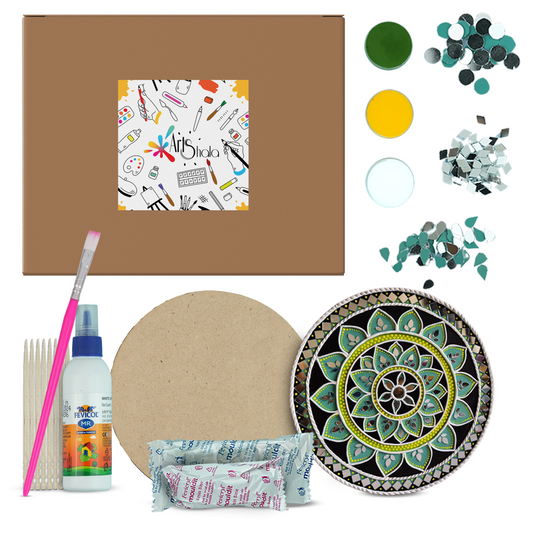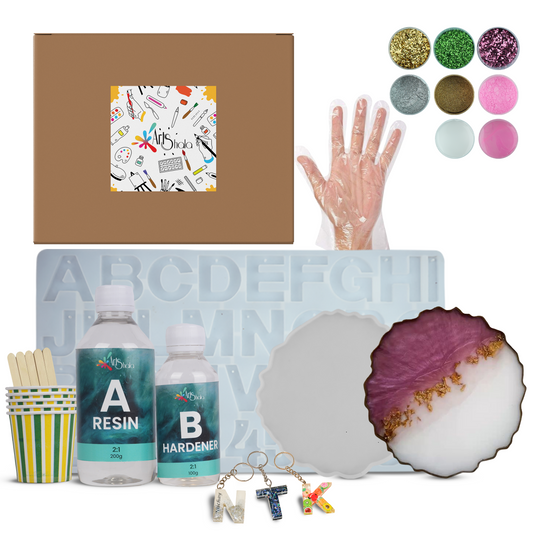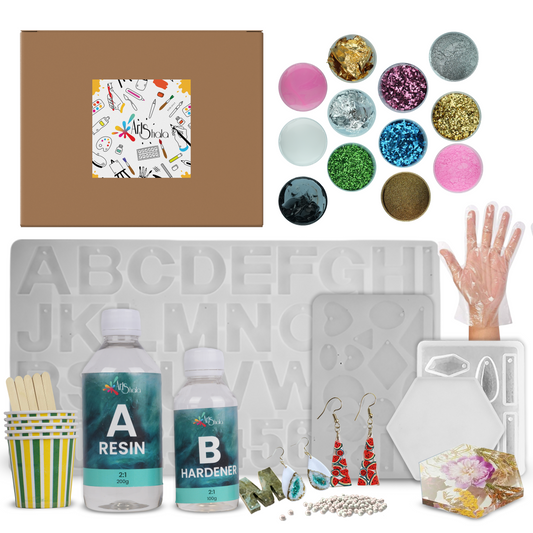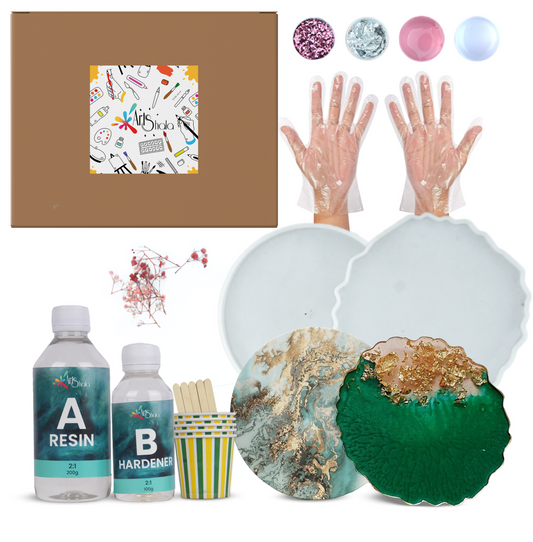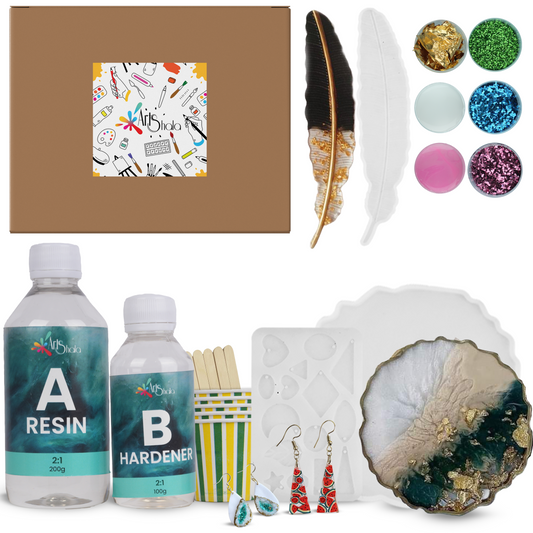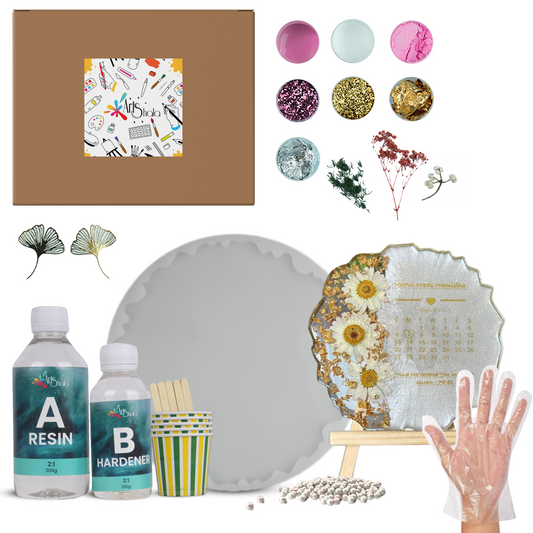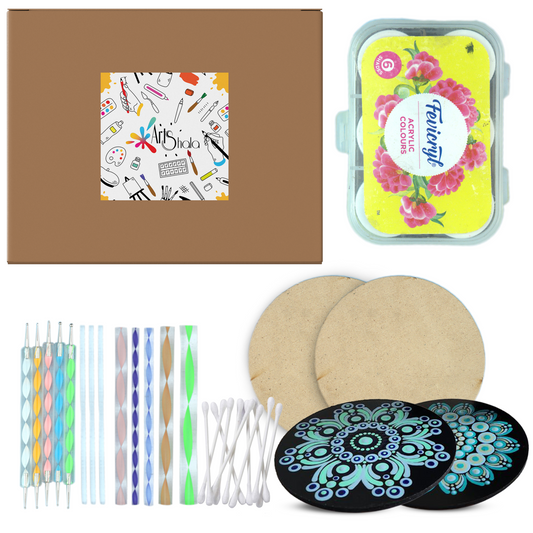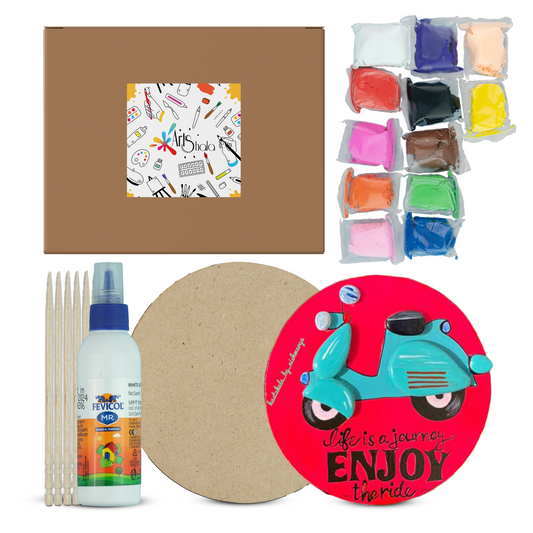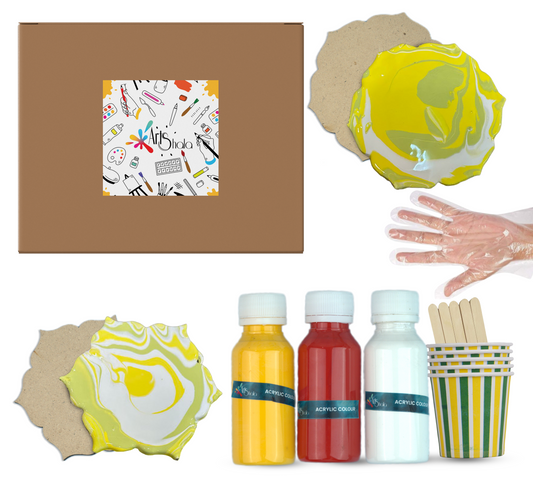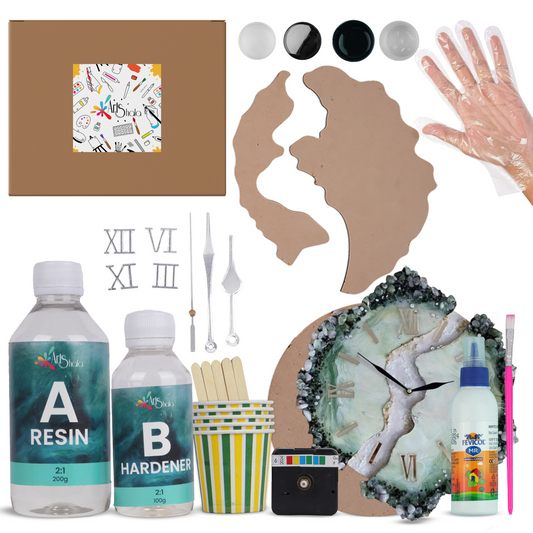10 Fun and Easy Acrylic Painting Ideas for Beginners
Acrylic painting is a fantastic medium for beginners due to its versatility and forgiving nature. Its quick-drying properties allow for experimentation and layering without the messiness of oils. Let’s dive into ten easy and enjoyable painting ideas to kickstart your artistic journey. To learn more about such techniques, enrol in an acrylic painting workshop.
Essential Supplies Before You Start
Before we dive into the ideas, let’s gather your basic supplies:
-
Acrylic paints: A starter set with primary colours (red, blue, yellow) and white is a good beginning.
-
Brushes: A variety of sizes, from flat to round, for different effects.
-
Canvas: Choose a size that suits your comfort level.
-
Palette: A disposable paper plate works fine.
-
Water container: For cleaning brushes.
-
Paper towels: Use them for cleaning up any spills and drying your brushes.
10 Acrylic Painting Ideas for Beginners
1. Abstract Expressionism
-
Idea: Abstract art is a fantastic starting point for beginners because it allows you to focus on the joy of painting without the pressure of creating a realistic image.
-
Technique: Experiment with different brushstrokes, splatters, and drips. Use bold colours and let the paint flow freely.
-
Tips: Cover the entire canvas with colour. You can also use a hairdryer to speed up drying time for layering.
2. Colour Blocking
-
Idea: Create a vibrant piece using large blocks of colour.
-
Technique: Use masking tape to create clean lines and geometric shapes. Fill in the blocks with solid colours.
-
Tips: Experiment with different colour combinations and geometric patterns. Remember to pull the tape while the paint is wet for crisp edges.
3. Sunset or Sunrise
-
Idea: Capture the beauty of a stunning sunset with acrylics.
-
Technique: Use warm colours (orange, yellow, red) for the sky and blend them. Add darker shades for the horizon.
-
Tips: Experiment with various colour combinations to create unique sunsets or sunrises. Consider adding silhouettes of trees or mountains.
4. Floral Delight
-
Idea: Flowers are a timeless subject easily adapted to suit your style. Paint beautiful flowers using simple shapes and colours.
-
Technique: Start with the flower's centre and gradually build layers of petals. Use different shades of the same colour for depth.
-
Tips: Refer to real flowers for inspiration. Experiment with different flower types and compositions.
5. Geometric Patterns
-
Idea: Create visually appealing designs using basic shapes.
-
Technique: Combine squares, circles, triangles, and other shapes to form patterns. Use contrasting colours for a striking effect.
-
Tips: Start with simple patterns and gradually increase complexity. Use masking tape for clean lines.
6. One-Stroke Flower
-
Idea: Paint beautiful flowers with a single stroke.
-
Technique: Practise creating basic flower shapes with one continuous stroke. Experiment with different colours and sizes.
-
Tips: Watch tutorials online for detailed instructions and demonstrations.
7. Ocean Waves
-
Idea: Capture the movement and energy of the ocean.
-
Technique: Use a mix of blues and whites to create the waves. Experiment with different brushstrokes to mimic the water's motion.
-
Tips: Use white paint to add foam and bubbles. Consider adding a beach or sky to complete the scene.
8. Portrait of a Pet
-
Idea: Create personalised artwork for your beloved pet.
-
Technique: Start with basic head, body, and limbs shapes. Gradually add details like eyes, nose, and fur.
-
Tips: Use photos as a reference. Simplify the details for a beginner-friendly approach.
9. Abstract Landscape
-
Idea: Paint a non-realistic representation of a landscape.
-
Technique: Experiment with different colours and textures to create a sense of depth and atmosphere.
-
Tips: Focus on creating mood and emotion rather than accuracy.
10. Acrylic Pouring
-
Idea: Create stunning, abstract artwork using a fluid pouring technique.
-
Technique: Mix acrylic paints with a pouring medium. Pour the paint onto a canvas and tilt it to create exciting patterns.
-
Tips: Experiment with different colour combinations and pouring techniques. Protect your workspace, as the paint can be messy.
Tips for Getting Started with Acrylic Painting
Before diving into the specific painting ideas, here are some essential tips to help you get started on your acrylic painting journey:
1. Gather Your Supplies
To begin, you'll need a basic set of supplies. Here’s a list of what you’ll need:
-
Acrylic Paints: Start with primary colours (red, blue, yellow), black, and white. This will allow you to mix various colours.
-
Brushes: Invest in various brushes, including flat, round, and filbert shapes. Synthetic brushes work well with acrylics.
-
Canvas or Canvas Board: Choose a surface you feel comfortable painting on. Pre-stretched canvases or canvas boards are great options.
-
Palette: A disposable paper palette or a reusable acrylic palette will help you mix your colours.
-
Water Container: For rinsing your brushes between colours.
-
Rags or Paper Towels: Useful for cleaning brushes and wiping off excess paint.
2. Set Up Your Workspace
Choose a well-lit area to set up your painting station. Make sure you have enough space to work comfortably and avoid clutter. Put a drop cloth or newspaper to protect your artwork surface from spills.
3. Experiment with Techniques
Acrylic painting provides many techniques to explore. Here are a few to try:
-
Dry Brushing: Use a dry brush to spread paint lightly over the surface for a textured effect.
-
Glazing: Thin your acrylic paint with water or a glazing medium to create transparent layers.
-
Sponge Painting: Use a sponge to apply paint for a soft, mottled effect.
-
Splattering: Flick paints onto the canvas with a brush or toothbrush for a playful, dynamic look.
4. Practice Colour Mixing
Understanding colour theory is essential for any artist. Experiment with mixing colours to see how primary colours blend to create secondary and tertiary colours. This knowledge will improve your ability to make the desired hues in your paintings.
5. Embrace Mistakes
One of the most liberating aspects of acrylic painting is that mistakes can often be corrected. Acrylics dry quickly, allowing you to paint over unsatisfied areas. Embrace the learning process, and don’t be discouraged by imperfections.
Conclusion
Acrylic painting is a universal and accessible medium that allows beginners to explore their creativity. From vibrant abstracts to whimsical florals and serene landscapes, the ideas presented in this blog post are just a starting point for your artistic journey. Remember to embrace the process, experiment with different techniques, and, most importantly, have fun! As you continue to paint and practice, your skills will grow, and you'll be amazed at the beautiful artwork you can create. So grab your brushes, dive into acrylic painting, and let your creativity shine! Contact Us to learn more about this art form or visit Arts Shala’s website.



